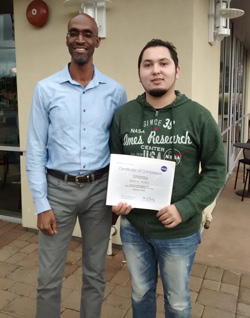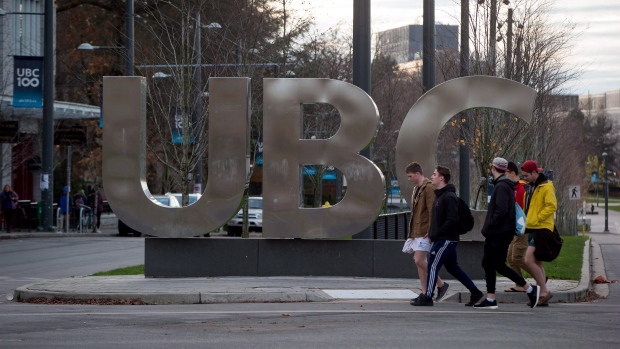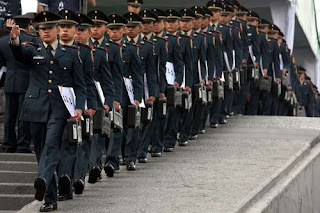Resumen
El presente artículo precisa lo que para la Andragogía es un adulto, asimismo, se especifican las etapas de la adultez y características en cada una de ellas. Cualquier facilitador universitario o de posgrado podrá apreciar al ser humano a quien tiene que promover su aprendizaje.
Palabras Clave
Andragogía, Adulto, Ciclo vital, etapas de adultez, Facilitador.
Abstract
ThisarticlespecifieswhatAndragogyforanadultisalsothestages of adulthood and features in eachspecified. Anyundergraduateorgraduatefacilitatorwillappreciatethe human beingwho has to promotelearning.
Keywords
Andragogy, adult, lifecyclestages of adulthood, Facilitator.
Introducción
A través de la evolución de la educación y de la misma humanidad, día a día van surgiendo nuevas situaciones laborales que para el adulto se puede convertir en oportunidades de desarrollo profesional o por el hecho de querer estar permanentemente a la vanguardia retornan al aula para continuar perfeccionando o ampliando sus conocimientos. Los facilitadores que atiendan la oferta educativa formal o no formal deberán considerar el explorar acerca de cómo es el adulto, sobre todo, en situación de aprendizaje.
Desarrollo
Según su raíz etimológica, adulto proviene de adultus cuyo significado es «a» = sin y «adultus» crecimiento, entonces, se entiende que es una persona que ha llegado a su mayor crecimiento o desarrollo, con respecto a la edad con que empieza esta etapa de vida del ser humano los diversos autores no se ponen de acuerdo, algunos indican que empieza a partir de los 18 años, algunos otros a partir de los 21.

Figura 1. Ciclo vital del hombre. Fuente internet, 2012
Para el caso de la Andragogía, el adulto tiene que cumplir con cuatro dimensiones, una de ellos es el aspecto biológico, que es cuando todos los órganos del ser humano llegan a su desarrollo pleno y que al mismo tiempo a partir de ahí comienza su proceso degenerativo. Otra dimensión es el aspecto psicológico en donde el ser humano se concibe como adulto, la dimensión social tiene que ver con el hecho que el individuo lo reconoce la sociedad como adulto y por ende, él o ella están insertados en el sector productivo. La dimensión legal sucede con el cumplimiento de la mayoría de edad cuando adquiere sus derechos y obligaciones como ciudadano.
Un joven universitario que en varios países latinoamericanos a pesar que tiene ya la mayoría de edad pero sigue estudiando no es un adulto pleno, de igual manera, un señor de más de cuarenta años que vive con sus padres, trabaja en la empresa familiar y que percibe dinero ocasionalmente como si fuera hijo de familia en lugar de tener un sueldo y que por el hecho de vivir en casa de sus padres les cede el derecho de poder tomar decisiones que a su vez las acepta a pie juntillas, casos como éste último, para el Dr. Kelly este comportamiento lo denomina como el síndrome de Peter Pan, ya que a pesar que crecen biológicamente, no logran desarrollarse plenamente para que puedan asumir lo que les corresponde de acuerdo a la etapa que viven.
Como un caso contrario, en donde la Andragogía reconoce que es un adulto puede ser el obrero o un profesionista que tiene un trabajo fijo con un horario y condiciones laborales a la que aceptó estar sujeto, ellos tienen la edad (dimensión biológica), tiene claro que debe responder responsablemente en sus actividades (dimensión psicológica) y que tiene una participación productiva (dimensión social), percibe un sueldo y por ello paga impuestos (dimensión legal).
Adam (1977), definió la adultez aplicada al ser humano como «plenitud vital […], debe entenderse como su capacidad de procrear, de participar en el trabajo productivo y de asumir responsabilidades inherentes a su vida social, para actuar con independencia y tomar sus propias decisiones con entera libertad».
La adultez a su vez según Erikson (1982) citado por Undurraga (2007, p.32) dividió en tres las etapas de la adultez:
Tabla 1.
Tipos y características de la adultez. Fuente: Undurraga, 2007.
|
Adultez temprana |
Adultez madura |
Adultez avanzada |
| Rango de edad |
18 a 40 años |
41 a 65 años |
Más de 65 años |
| Características |
· Aprendizaje con un compañero de vida.
· Empezar a trabajar.
· Ser un ciudadano responsable.
· Encontrar un grupo de pertenencia. |
· Ser un ciudadano adulto socialmente responsable.
· Establecer y mantener un cierto nivel de vida.
· Ayudar a sus hijos a ser adultos responsables.
· Entrar en relación con su cónyuge como una persona total y única.
· Aceptar el cambio fisiológico que trae la mitad de la vida. |
· Adaptarse a una salud física que declina.
· Adaptarse a la jubilación y disminución de ingresos.
· Adaptarse a la muerte del cónyuge o pareja.
· Crear lazos explícitos con la gente de su grupo de edad.
· Enfrentar obligaciones civiles y sociales.
· Instalarse físicamente en un emplazamiento satisfactorio. |
| · Está en edad de haber egresado de la universidad, o que ya insertado en el ámbito laboral adquiere bienes que denoten el estatus que desea tener. Quizá ya está pensando en casarse. |
· Consigue asentarse en alguna organización para desarrollarse profesional y económicamente. |
· Sucede el síndrome del nido vacío.
· Sucede el encuentro entre tres generaciones: abuelo, padre e hijo.
· Asiste a funerales de sus amistades. |
Asimismo, Alcalá (2000) definió las situaciones que con el paso de tiempo el ser humano va teniendo de acuerdo a la calidad de vida mantenida y que se refleja en la adultez avanzada, senectud o vejez (ver tabla 2).
Tabla 2.
Deficiencias en la edad avanzada. Fuente: Alcalá, 2000.
| Visión |
• Presbicia e hipermetropía.
• Niveles de profundidad y colores.
• Menos adaptación a cambios de luz. |
| Audición |
• Niveles de audición. |
| Fortaleza |
• Realizan actividades pero con mayor lentitud. |
| Esqueleto y Músculos |
• Encorvamiento de la columna vertebral.
• Disminución de altura.
• Las funciones musculares disminuyen en función a lo ejercitado en edades anteriores. |
| Sistema nervioso |
• A partir de los 35 mueren miles de neuronas.
• Disminuyen los reflejos.
• Se vuelven torpes con algunos movimientos corporales.
• Pérdida de oxigenación cerebral. |
| Memoria |
• Pérdida de memoria a corto plazo.
• Incrementa la capacidad de juicio.
• Incrementa su actitud serena. |
Según Castillo (2014), cabe hacer mención que en un proceso formativo y en él participa uno o más adultos mayores, es conveniente conocer un poco más acerca de ellos, para evitar situaciones que puedan abochornar a alguien, por ejemplo, si uno de ellos tiene diabetes, quizá sea más conveniente ubicarlo en sillas cercanas a la puerta por si tiene que ir a miccionar frecuentemente, o si sufre alguna cardiopatía o lesión osteomuscular por si se tienen consideradas algunas actividades que requieran movimiento.
Otra consideración importante para que se promueva adecuadamente el aprendizaje en los participantes es el hecho que en la adultez el trastorno por déficit de atención con hiperactividad, (hoy TDAH únicamente) puede estar presente ya sea que es la consecuencia de un niño con TDAH y que ahora como adulto continua con el síndrome o se manifiesta hasta en esta parte del ciclo vital del individuo (Antoni, Bosch y Casas, 2009).
Por lo que no puede uno ignorar esta circunstancia en los procesos formativos donde uno participe como facilitador. Los síntomas que tienen mayor peso y que se enlistan descendentemente en porcentaje de influencia son: inatención, impulsividad e hiperactividad. Mismos que tienen según Antoni y otros (2009), un origen multifactorial, en donde las causas biológicas pueden ser de hasta un 80% o que se dieron algunos problemas ambientales durante el embarazo por el consumo de la madre gestante de drogas o tabaco o en el momento del parto.
Tabla 3.
Síntomas manifestados por adultos con TDAH. Fuente: Antoni y otros, 2009.
| Inatención |
Hiperactividad |
Impulsividad |
| • Cometer errores por inatención.
• Dificultad para mantener la atención sostenida (películas, libros o conferencias).
• No escuchar cuando les hablan directamente.
• Tendencia a dejar cosas para más adelante.
• Dificultades de organización y planificación.
• No realizar tareas que requieran un esfuerzo mental.
• Pérdida de objetos.
• Distraerse con facilidad.
• Despistarse con frecuencia. |
• Movimiento constante cuando está sentado.
• Dificultad para estar sentado durante algún tiempo.
• Inquietud subjetiva interior.
• Hablar permanentemente.
• Sensación de “motor interior”.
• Dificultad para estar tan tranquilo como los demás. |
• Precipitar las respuestas ante las preguntas.
• Dificultad para esperar su turno.
• Entrometerse en las conversaciones de otros. |
Bien, considerando lo antes mencionado, cual fuese el interés que mueva al adulto a incorporarse a un proceso formativo, es conveniente que el facilitador (el andragogo) considere los siguientes factores basados en la psicología educativa:
- El adulto trae al proceso formativo un cúmulo de conocimientos o de experiencias o de ambos. Su experiencia puede ser profesional o de la vida, por lo tanto y en palabras de Adam (1977, p. 67) “la enseñanza del adulto debe orientarse a proporcionarle nuevos contenidos vitales a su anterior desenvolvimiento”.
- El hecho de que el adulto asista a un proceso formativo, es apreciado como un acto voluntario basado en una toma de decisión consciente y que por lo tanto sus expectativas son claras, por lo que, si lo que se promueve en el proceso formativo no satisface sus aspiraciones, abandona fácilmente dicho proceso formativo. Por lo que a los adultos se le debe de presentar “experiencias y contenidos que mantengan su interés” en el proceso formativo (Adam, 1977, pp. 67-68).
- En el proceso formativo es conveniente considerar que a diferencia del niño, el adulto mantiene un conjunto de situaciones en su vida diaria que pueden alterar su estado anímico y que puede repercutir en su disposición al aprendizaje aun teniendo en cuenta que estudiar puede ser el medio para mejorar sus condiciones humanas. Otro factor que también incide en el rendimiento del adulto en su estudio pueden ser la deficiencia en su descanso, alimento y su salud.
- El contenido programático del proceso formativo de los adultos debe estar directamente atendiendo las necesidades de los participantes, ajustado a sus capacidades intelectuales y cognitivas, para que puedan en poco tiempo completar lo que al principio del proceso fuese su déficit cultural o técnico.
- El facilitador debe comprender que durante el proceso formativo se halla frente a un individuo, con coincidencias tales como ser adulto sin importar el momento de su ciclo vital, el pleno goce de sus derechos ciudadanos, con responsabilidades dentro de la sociedad, incorporado a la vida productiva generalmente, algunos son jefes de familia y en general, a quienes debe tratar con tacto y delicadeza estimulando su interés y preocupación para promover el alcance de sus objetivos de aprendizaje.
Asimismo, son cuatro los motivadores principales para el aprendizaje de los adultos:
- Los adultos quieren ser estudiantes exitosos.
- Los adultos quieren sentir que ejercen su voluntad en su aprendizaje.
- Los adultos desean aprender algo de valor para ellos.
- Los adultos desean experimentar el aprendizaje como algo placentero (Knowles, 2006, 166).
Por otra parte, Castillo (2014) mencionó que es necesario considerar que los participantes traen una mezcla de factores que los hacen únicos e irrepetibles:
- Tiene algún deterioro o deficiencia fisiológica que impida alguna actividad.
- Deficiente alimentación que no le permita una permanencia en el curso.
- Poco descanso y mucho desgaste físico o intelectual.
- Falta de confianza en sí mismo.
- Resistencia al cambio.
- Poca atención a las exposiciones e instrucciones.
- Se niega las diferentes aplicaciones de lo que está por aprender.
- Dificultad para expresar sus ideas.
- Temor de introspección.
- No desea enfrentar su nivel de aprendizaje.
- Temor a la crítica.
- Poca capacidad de memoria.
- Actitud individualista.
- Deficientes hábitos de estudio.
- Desorganización.
Otras consideraciones en los adultos que ingresan a diversos procesos formativos es tener en cuenta la manera en que Knowles (2006) tipificó a los estudiantes:
- Aprendices orientados a una meta. Recurren a la educación para cumplir objetivos bien trazados.
- Alumnos orientados a una actividad. Participan porque encuentran en las circunstancias del aprendizaje un significado que no tiene que ver con los contenidos, por ejemplo, en un curso se logran relacionar para ampliar las acciones de la empresa donde labora.
- Aprendices orientados al aprendizaje. Estudian por el amor al conocimiento.
Adam (1977) determinó que los adultos aprenden con base en cuatro intereses fundamentales:
- Económico. El adulto comprende que a mayor preparación, mayores posibilidades tendrá de obtener un mejor trabajo o aspirar a estar en posibilidad de un ascenso.
- Capacitación profesional. En la actualidad, para el caso de medicina ya no es suficiente ser médico general y según la tendencia, tampoco ser especialista. Lo de hoy es que posean subespecialidades. Eso hace que en algunas profesiones se sepa mucho en un campo muy específico de conocimiento, en otras profesiones la certificación de sus conocimientos son un manera de ofertarle a la sociedad servicios profesionales de calidad.
- Estudios superiores. Algún sector de adultos consideran la posibilidad de estudiar con la finalidad de continuar con sus estudios profesionales, por ejemplo, aquel que terminó su licenciatura y que ahora ya está considerando la posibilidad de continuar su preparación con un posgrado.
- Extender la sociabilidad y relaciones humanas. Algunos adultos consideran que el incorporarse a un proceso formativo (formal o no formal) puede ser el medio para extender sus relaciones sociales y humanas, provocando que se motive continuamente su interés por aprender de acuerdo a sus expectativas.
Conclusión
Para los que participamos como facilitadores entre adultos en procesos formativos basados en la Andragogía, éste no puede ser considerado únicamente por el hecho de la edad, sino desde las cuatro dimensiones: biológica, psicológica, social y legal. Asimismo, sus intereses y metas irán siendo modificados de acuerdo al momento del ciclo vital donde se encuentre el adulto en ese momento.
Con respecto a su aprendizaje denota una serie de situaciones que en primer lugar le permite motivarse a someterse a un proceso formativo, cuyo contenido temático tiene que estar acorde a las expectativas de los participantes debido a que de no ser así desertará o perderá interés, asimismo, el participante por su condición y etapa de adultez, estilo y ritmo de aprendizaje y las consideraciones como de estado de salud y nivel de estrés deberá ser atendido tanto en lo general como en lo particular.
Referencias
Adam, F. (1977). Andragogía. Caracas: FIDEA.
Alcalá, A. (2000). La praxis andragógica en la edad avanzada. Caracas: UNA.
Antoni, J., Bosch, R. y Casas, M. (2009). Comprender el TDAH en adultos. Barcelona: Amat.
Castillo, F. (2014). Andragogía. Procesos formativos entre adultos. Oaxaca: Carteles Editores.
Undurraga, C. (2004). ¿Cómo aprenden los adultos? Una mirada psicoeducativa. Chile: Universidad Católica de Chile.
 abilidades.
abilidades. orga, con poco más de dos décadas de vida, también visitó y realizó una estancia de investigación en el Ames Research Center. Él es estudiante de octavo semestre en ingeniería en sistemas computacionales en el Instituto Tecnológico Superior de Zapopan en Jalisco.
orga, con poco más de dos décadas de vida, también visitó y realizó una estancia de investigación en el Ames Research Center. Él es estudiante de octavo semestre en ingeniería en sistemas computacionales en el Instituto Tecnológico Superior de Zapopan en Jalisco.




















 Users Today : 2
Users Today : 2 Total Users : 35460494
Total Users : 35460494 Views Today : 9
Views Today : 9 Total views : 3419367
Total views : 3419367